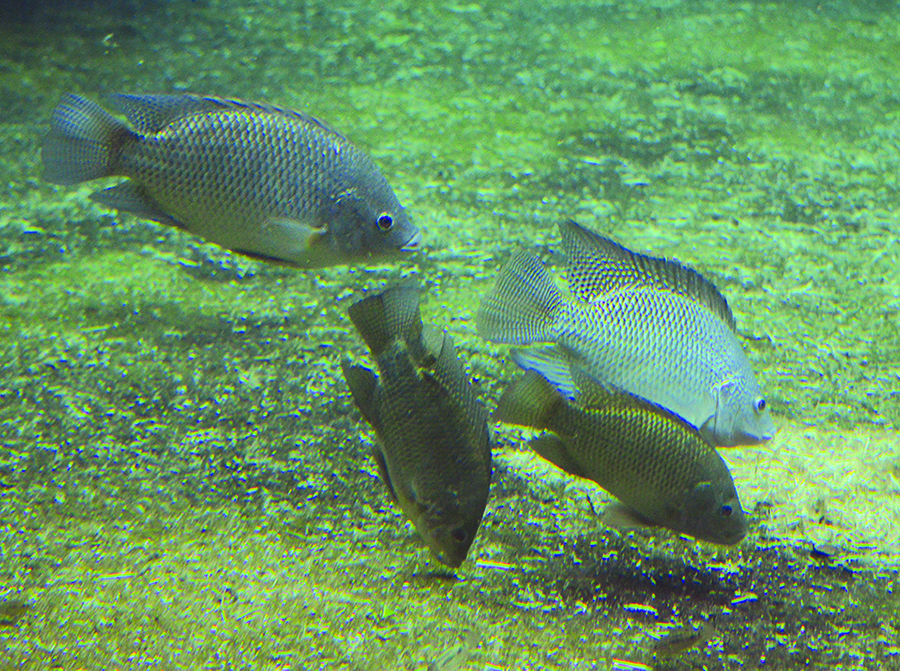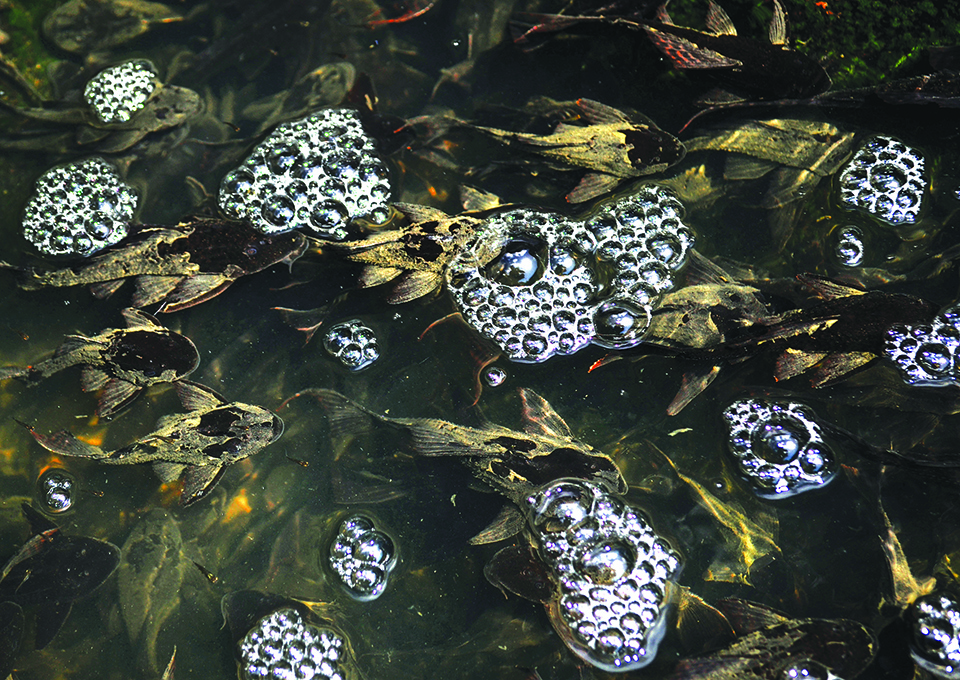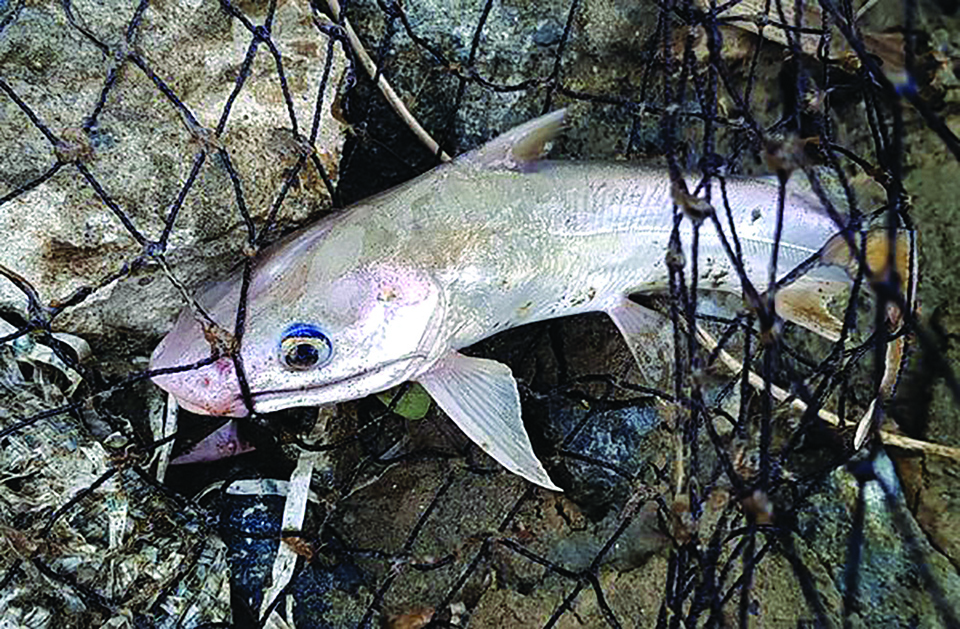Text and photos by GREGG YAN
This COVID pandemic has drastically limited the number of places we can visit. As a sprawling outdoor destination, the Marikina River remains one of the few places left for Metro Manila’s citizens to commune with nature.

RIVER DWELLERS
I visited the river right after the recent monsoon rains and noticed dozens of people flocking to the rivers. Whenever heavy rains washed over the mountains of the Sierra Madre, Fish from the floating farms of Laguna Lake sometimes escaped down the Marikina and Pasig Rivers. There were Knifefish and Cream Dory, some as heavy as 20 pounds!
Through the years, I’ve noted what fishes were in the river. As a young student in UP and Ateneo 20 years ago, I clearly remember the Marikina River having bottom-dwelling gobies called Biya, spear-shaped halfbeaks called Kasuswit, climbing perch called Martiniko who can briefly crawl on land to reach the next muddy pool, colorful Gouramis, and a host of other Fish.
Today, invasive Fish have taken over the river. Hailing mostly from Africa, South America, and Indochina, they have successfully adapted to Philippine waterways – which is bad news for our native Fish.

NEW RESIDENTS
During my last trip, there were Black Chin Tilapia (called Gloria or Arroyo because like the former President, the fish have cute little moles on their faces), Nile Tilapia, African Catfish, Janitorfish, Pangasius or Cream Dory, plus smaller Fish like Guppies and Mollies who eat Mosquito larvae. These Fish have one thing in common – they aren’t native to the Philippines. In fact, the only native Fish the fishers caught that day were several Kanduli, brackish water Catfish usually spotted along Manila Bay.
Our native Fish are slowly disappearing. Sadly, this seems to be the norm and not the exception for many of our rivers and lakes. Even protected biodiversity bastions like Taal Lake, with its unique freshwater Sardines called Tawilis and Trevally called Maliputo, have not been spared from the introduction of exotics, imported for two reasons.
The first of course, is for food. The pressing need to feed Pinoys has given rise to Tilapia farms all over the archipelago. So successful are Tilapia at colonizing waterways that most Pinoys now think the ubiquitous Fish are native to the country. Newcomers to the country’s aquaculture industry include Pangasius, giant Catfish from Indochina marketed as “Cream Dory” to make the Fish sound a bit more delicious.
The aquarium trade is the second entry point for invasive Fish. Best exemplified by the Janitorfish now becoming more common in our rivers, many Fish are sold when they are young, cute and still colorful. As many of them mature, they lose their bright coloration and grow larger than most expect them to be. Unwilling to kill their beloved grown Fish, aquarists sometimes release them in local waterways and hope for the best – not knowing that Fish coming from similar climates as the Philippines can survive and even breed in our waters.
So, now our rivers and lakes host giant Knifefish and Snakeheads from Indochina, Janitorfish from the meandering rivers of the Amazon, plus territorial Cichlids from Africa.
CONSEQUENCES OF HUMAN ACTIVITIES

What can happen down the line if these invasive fish continue to swim in our rivers? Let’s take a look at what’s currently happening in Africa.
In East Africa’s Lake Victoria, the introduction of Nile Perch has proven disastrous. In an attempt to “boost fisheries productivity”, the predatory Fish were introduced to the lake in the 1950s. Growing over six feet long, they soon preyed on over 100 other Fish species, practically wiping out 60% of the lake’s native Cichlids in what may be the largest vertebrate extinction of the 20th century.
As you read this, thousands of brightly-colored Cichlids (one species alone is worth Php 2,000 apiece, compared to Nile Perch selling for Php 200 per kilogram) are being eaten hourly. The Philippines has already experienced a similar phenomenon, with at least 15 fish species declared extinct in Lake Lanao.“This is not the first time we are witnessing the impacts of invasive alien species, which eat or outcompete native species,” says Dr. Theresa Mundita Lim, executive director for the ASEAN Centre for Biodiversity, an intergovernmental body that protects and conserves the ASEAN’s biological diversity.
“While the introduction of invasive alien species like [T]ilapia or [P]angasius may be perceived as valuable for livelihoods, food production or pest control, science-based assessments should be undertaken to determine if it leads to adverse impacts on the environment and biodiversity. We should ensure that this will not bring more harm in the long run,” adds Lim. According to her, the extinction of native species affects nutrition, food security and dietary diversity. This leads to numerous local, national and regional implications.
WORSENING PLIGHT

According to the ASEAN Biodiversity Outlook 2, ASEAN member states have identified 112 invasive alien species affecting forests, agriculture, and aquatic ecosystems.
“Given that we have all these introduced species already being considered as economically important and are being used in aquaculture, it is imperative that we focus our research and technology development on the breeding, propagation, and culture of our native species like Ayungin, Tawilis, Maliputo, Igat, and native Hito, both for conservation and sustainable aquaculture,” explains Dr. Ma. Rowena Eguia, a geneticist from SEAFDEC/AQD, an international body that promotes sustainable fisheries development in Southeast Asia.
Best Alternatives, an NGO based in the Philippines, and VB Consultancy, a research firm based in Europe, are working to highlight the dangers of farming invasive species. Instead of farming potentially invasive foreign Fish, the two groups are working to convince governments and private institutions to farm native species instead.
“In addition to conserving genetic diversity, farming native Fish has many benefits,” explains Jonah van Beijnen, head of VB Consultancy. “They are often best suited to local climates, giving them better chances of surviving adverse weather effects like storms or droughts. Local species can better resist both disease and parasites. Lastly, they are typically in demand and fetch better prices than invasive Fish.”
Institutions like SEAFDEC/AQD, DA-BFAR, DA-NFRDI, and the University of the Philippines are already experimenting with rearing and farming Ayungin, Tawilis, Maliputo, and other native Fish.
This is a vital step in protecting and sustainable managing the populations of native Fish still thriving in our country’s rivers and lakes.
Biodiversity – once lost – is gone forever. Though the Marikina River and other waterways of the Philippines still have many species today, there might soon come a time when our beautiful native Fish are relegated to the memories of those who used to visit our rivers.
Gregg Yan is the executive director of Best Alternatives, which promotes sustainable and science-based methods for biodiversity conservation, farming and aquaculture.






